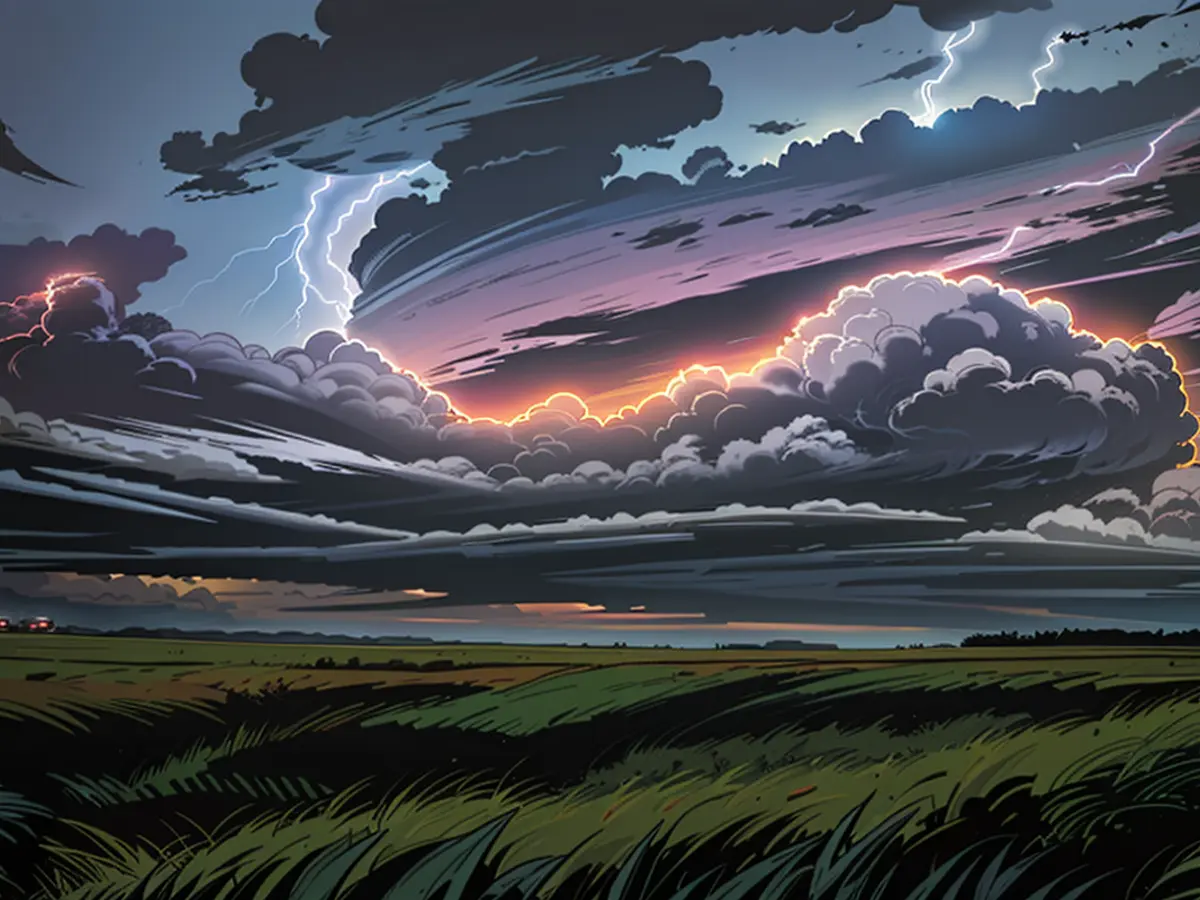How to Cope With Thunderstorms
The summer weather is unpredictable. Many people have been surprised by thunderstorms in recent weeks, with two teenagers dying from lightning strikes. However, experts say these deaths can be prevented.
On Germany's highest peak, the Zugspitze, an 18-year-old was killed by a lightning strike on July 22 while hiking during a thunderstorm near the summit station. On the same Sunday, eight members of a family were injured by a lightning strike in Delmenhorst near Bremen. They had sought shelter under a tree at a park grill site. A 14-year-old girl who was revived at the scene later died in the hospital. Her five-year-old brother was initially in critical condition. When heavy rain suddenly starts and thunder and lightning occur, people can easily panic. However, it's important to check the weather forecast carefully when planning outdoor activities.
What is the risk of being struck by lightning?
There is no official German statistic on the number of deaths and injuries caused by lightning strikes. The Association for Electrical, Electronic & Information Technologies (VDE) collects and analyzes media reports on lightning incidents and interviews survivors. According to the association's analysis, there are about seven deaths and 120 injuries caused by lightning strikes in Germany each year.
"Thirty percent of people directly struck by lightning die," says Thomas Raphael, a lightning protection expert at VDE. Each year, about 52 people are injured, often suffering lifelong consequences.
What precautions should be taken?
If thunderstorms are forecast, outdoor activities should be avoided, Raphael advises. "If I know there's a chance of thunderstorms in the afternoon, I need to know where I can find shelter," says the electrical engineer. "The best protection is a closed stone building," emphasizes lightning researcher Ullrich Finke of Hannover University. It's also relatively safe inside cars, but windows should remain closed.
The car's metal body provides protection and prevents electricity from entering the interior. Convertibles only offer protection if they have a metal layer in the roof. The shelter should be sought before the storm approaches, Raphael says. "Our analyses show that there are situations where the first lightning strike can cause damage."
What should be avoided outdoors during a thunderstorm?
"Many people still don't realize that they should avoid trees during thunderstorms," says Raphael. This applies to all types of trees. Lightning often strikes the highest point, so horse riders should also dismount. Lightning can jump from trees or wooden poles to nearby people, even over several meters. Finke also advises against taking shelter against a house wall, as it has a similar effect to a tree. Water and metallic objects or metal poles should also be avoided, as they conduct electricity well. Cyclists should dismount and leave their bike at least ten meters away.
Where can I seek shelter?
"Huts are unsuitable, as the current will travel through them to the ground," says neurologist Berthold Schalke, who treats people affected by lightning strikes at Regensburg University Hospital. In 2013, four women died on a golf course after seeking shelter in a wooden hut during a thunderstorm, as the lightning jumped from the hut's walls to them.
Schalke are also known as lightning victims who were sitting in bus shelters. In this case, the lightning struck in a tree behind the bus stop and reached the person through the ground. For example, while hiking in the mountains, metallic ladders or railings can cause deadly electric shocks.
What do I do if I can't reach a solid building?
It is recommended to find a depression in the open field and crouch down with closed feet. If lightning strikes nearby, the current will spread through the ground. Standing with legs apart can create a step voltage between the feet - current flows through the body.
The danger zone is more than ten meters around the impact point, and in rocky areas, it is even larger. Rocks should not be touched while crouching. People should also crouch at least ten meters apart and not touch each other - so no children should be held by the hand.
What are the possible long-term effects after lightning strikes?
According to doctors, neuropsychological effects include cognitive impairments. Patients often have difficulty concentrating and have memory problems. The thin nerve fibers in the body through which the current flowed are irreversibly damaged. A consequence is the loss of pain and temperature sensation.
"Many people cannot continue to work after a lightning strike," says the doctor. Additionally, some patients have difficulty proving to their insurance that their illnesses are actually direct consequences of the lightning accident. If the current enters through the ground, there are no scars on the skin.
After several incidents in Germany, it's noted that about 7 deaths and 120 injuries from lightning strikes occur annually. During a thunderstorm, it's crucial to avoid trees, water, metallic objects, and seeking shelter against a house wall. If you can't reach a solid building, crouching in a depression in an open field with closed feet can provide some protection.







